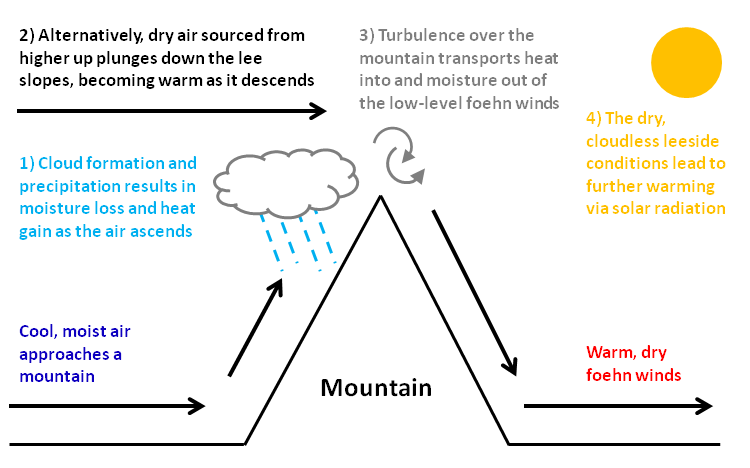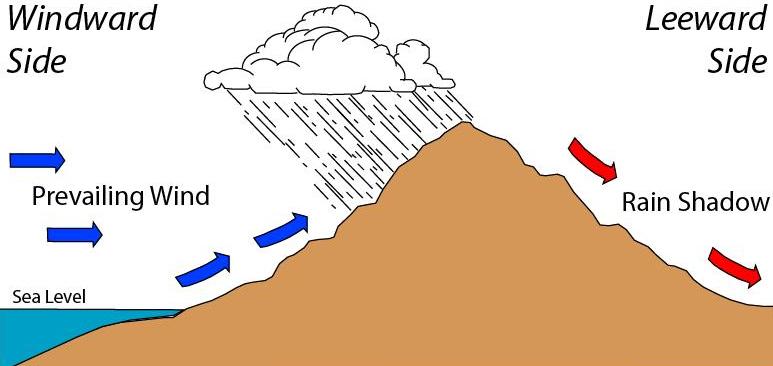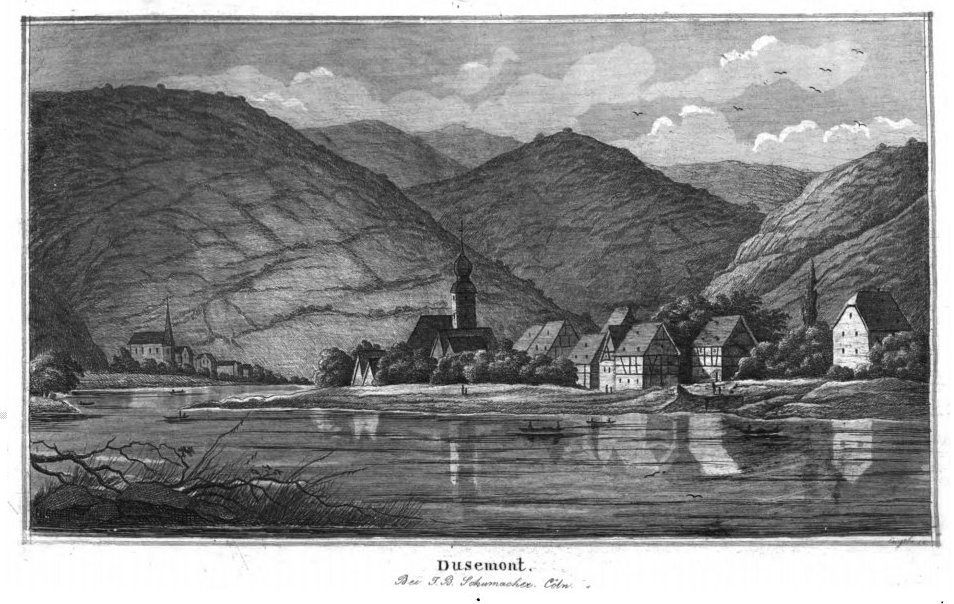|
Kesten (municipality)
Kesten is an ''Ortsgemeinde'' – a municipality belonging to a ''Verbandsgemeinde'', a kind of collective municipality – in the Bernkastel-Wittlich district in Rhineland-Palatinate, Germany. Geography Location The municipality lies surrounded by vineyards in the natural and cultivated landscape of the Moselle valley in the Trier region. Kesten is found in a small hollow on the river’s left bank. The nearest middle centres are the double town of Bernkastel-Kues and the district seat, Wittlich. The university city of Trier lies roughly 28 km away as the crow flies. Kesten belongs to the ''Verbandsgemeinde'' of Bernkastel-Kues, whose seat is in the like-named town. Climate The town lies in a transitional zone between temperate oceanic climate and continental climate; compared to other regions in Germany, a very warm and sunny climate prevails here. In neighbouring Brauneberg on 11 August 1998, a record temperature of 41.2 °C in the shade, the highest ever air ... [...More Info...] [...Related Items...] OR: [Wikipedia] [Google] [Baidu] |
Municipalities Of Germany
MunicipalitiesCountry Compendium. A companion to the English Style Guide European Commission, May 2021, pages 58–59. (german: Gemeinden, ) are the lowest level of official territorial division in . This can be the second, third, fourth or fifth level of territorial division, depending on the status of the municipality and the '''' (federal state) it ... [...More Info...] [...Related Items...] OR: [Wikipedia] [Google] [Baidu] |
Oceanic Climate
An oceanic climate, also known as a marine climate, is the humid temperate climate sub-type in Köppen classification ''Cfb'', typical of west coasts in higher middle latitudes of continents, generally featuring cool summers and mild winters (for their latitude), with a relatively narrow annual temperature range and few extremes of temperature. Oceanic climates can be found in both hemispheres generally between 45 and 63 latitude, most notably in northwestern Europe, northwestern America, as well as New Zealand. Precipitation Locations with oceanic climates tend to feature frequent cloudy conditions with precipitation, low hanging clouds, and frequent fronts and storms. Thunderstorms are normally few, since strong daytime heating and hot and cold air masses meet infrequently in the region. In most areas with an oceanic climate, precipitation comes in the form of rain for the majority of the year. However, some areas with this climate see some snowfall annually during winter. M ... [...More Info...] [...Related Items...] OR: [Wikipedia] [Google] [Baidu] |
Flooding
A flood is an overflow of water ( or rarely other fluids) that submerges land that is usually dry. In the sense of "flowing water", the word may also be applied to the inflow of the tide. Floods are an area of study of the discipline hydrology and are of significant concern in agriculture, civil engineering and public health. Human changes to the environment often increase the intensity and frequency of flooding, for example land use changes such as deforestation and removal of wetlands, changes in waterway course or flood controls such as with levees, and larger environmental issues such as climate change and sea level rise. In particular climate change's increased rainfall and extreme weather events increases the severity of other causes for flooding, resulting in more intense floods and increased flood risk. Flooding may occur as an overflow of water from water bodies, such as a river, lake, or ocean, in which the water overtops or breaks levees, resulting in some of t ... [...More Info...] [...Related Items...] OR: [Wikipedia] [Google] [Baidu] |
Coat Of Arms
A coat of arms is a heraldry, heraldic communication design, visual design on an escutcheon (heraldry), escutcheon (i.e., shield), surcoat, or tabard (the latter two being outer garments). The coat of arms on an escutcheon forms the central element of the full achievement (heraldry), heraldic achievement, which in its whole consists of a shield, supporters, a crest (heraldry), crest, and a motto. A coat of arms is traditionally unique to an individual person, family, state, organization, school or corporation. The term itself of 'coat of arms' describing in modern times just the heraldic design, originates from the description of the entire medieval chainmail 'surcoat' garment used in combat or preparation for the latter. Roll of arms, Rolls of arms are collections of many coats of arms, and since the early Modern Age centuries, they have been a source of information for public showing and tracing the membership of a nobility, noble family, and therefore its genealogy across tim ... [...More Info...] [...Related Items...] OR: [Wikipedia] [Google] [Baidu] |
Plurality Voting System
Plurality voting refers to electoral systems in which a candidate, or candidates, who poll more than any other counterpart (that is, receive a plurality), are elected. In systems based on single-member districts, it elects just one member per district and may also be referred to as first-past-the-post (FPTP), single-member plurality (SMP/SMDP), single-choice voting (an imprecise term as non-plurality voting systems may also use a single choice), simple plurality or relative majority (as opposed to an ''absolute majorit''y, where more than half of votes is needed, this is called ''majority voting''). A system which elects multiple winners elected at once with the plurality rule, such as one based on multi-seat districts, is referred to as plurality block voting. Plurality voting is distinguished from ''majority voting'', in which a winning candidate must receive an absolute majority of votes: more than half of all votes (more than all other candidates combined if each voter ha ... [...More Info...] [...Related Items...] OR: [Wikipedia] [Google] [Baidu] |
Kesten 1838
Kesten is a municipality in Germany. Kesten may refer to: People * Dieter Kesten, a German militant * Harry Kesten (1931–2019), American mathematician * Hermann Kesten Hermann Kesten (28 January 1900 – 3 May 1996) was a German novelist and dramatist. He was one of the principal literary figures of the New Objectivity movement in 1920s Germany. The literary prize Hermann Kesten Medal has been given in his hon ... (1900–1996), German novelist, after whom the Hermann Kesten Medal is named * Stefan Kesten (1888–1953), French chess player See also * Kesten Point {{disambiguation ... [...More Info...] [...Related Items...] OR: [Wikipedia] [Google] [Baidu] |
Foehn Wind
A Foehn or Föhn (, , ), is a type of dry, relatively warm, downslope wind that occurs in the lee (downwind side) of a mountain range. It is a rain shadow wind that results from the subsequent adiabatic warming of air that has dropped most of its moisture on windward slopes (see orographic lift). As a consequence of the different adiabatic lapse rates of moist and dry air, the air on the leeward slopes becomes warmer than equivalent elevations on the windward slopes. Foehn winds can raise temperatures by as much as 14 °C (25 °F) in just a matter of hours. Switzerland, southern Germany and Austria have a warmer climate due to the Foehn, as moist winds off the Mediterranean Sea blow over the Alps. Etymology The name ''Foehn'' (german: Föhn, ) arose in the Alpine region. Originating from Latin ''(ventus) favonius'', a mild west wind of which Favonius was the Roman personification and probably transmitted by rm, favuogn or just ''fuogn'', the term was adopted as ... [...More Info...] [...Related Items...] OR: [Wikipedia] [Google] [Baidu] |
Rain Shadow
A rain shadow is an area of significantly reduced rainfall behind a mountainous region, on the side facing away from prevailing winds, known as its leeward side. Evaporated moisture from water bodies (such as oceans and large lakes) is carried by the prevailing onshore breezes towards the drier and hotter inland areas. When encountering elevated landforms, the moist air is driven upslope towards the peak, where it expands, cools, and its moisture condenses and starts to precipitate. If the landforms are tall and wide enough, most of the humidity will be lost to precipitation over the windward side (also known as the ''rainward'' side) before ever making it past the top. As the air descends the leeward side of the landforms, it is compressed and heated, producing foehn winds that ''absorb'' moisture downslope and cast a broad "shadow" of dry climate region behind the mountain crests. This climate typically takes the form of shrub–steppe, xeric shrublands or even deserts ... [...More Info...] [...Related Items...] OR: [Wikipedia] [Google] [Baidu] |
Eifel
The Eifel (; lb, Äifel, ) is a low mountain range in western Germany and eastern Belgium. It occupies parts of southwestern North Rhine-Westphalia, northwestern Rhineland-Palatinate and the southern area of the German-speaking Community of Belgium. The Eifel is part of the Rhenish Massif; within its northern portions lies the Eifel National Park. Geography Location The Eifel lies between the cities of Aachen to the north, Trier to the south and Koblenz to the east. It descends in the northeast along a line from Aachen via Düren to Bonn into the Lower Rhine Bay. In the east and south it is bounded by the valleys of the Rhine and the Moselle. To the west it transitions in Belgium and Luxembourg into the geologically related Ardennes and the Luxembourg Ösling. In the north it is limited by the Jülich-Zülpicher Börde. Within Germany it lies within the states of Rhineland-Palatinate and North Rhine-Westphalia; in the Benelux the area of Eupen, St. Vith and Luxemb ... [...More Info...] [...Related Items...] OR: [Wikipedia] [Google] [Baidu] |
Brauneberg
Brauneberg is an ''Ortsgemeinde'' – a Municipalities of Germany, municipality belonging to a ''Verbandsgemeinde'', a kind of collective municipality – in the Bernkastel-Wittlich Districts of Germany, district in Rhineland-Palatinate, Germany. It is known above all for its wine and its meteorological distinctions. Geography Location The municipality lies on the Moselle (river), Mosel near Bernkastel-Kues. It belongs to the Bernkastel-Kues (Verbandsgemeinde), ''Verbandsgemeinde'' of Bernkastel-Kues, whose seat is in the town of the same name. Climate Here on 11 August 1998, the highest ever temperature in Germany was measured, 41.2 °C, at the Meteomedia AG, Meteomedia weather station by Jörg Kachelmann. Nevertheless, Brauneberg is not said to be Germany's number-one hotspot because the weather station is not included in official measurements owing to its location on a slate mountain. Constituent communities Brauneberg's ''Ortsteile'' are Brauneberg, Filzen and Hi ... [...More Info...] [...Related Items...] OR: [Wikipedia] [Google] [Baidu] |
Continental Climate
Continental climates often have a significant annual variation in temperature (warm summers and cold winters). They tend to occur in the middle latitudes (40 to 55 north), within large landmasses where prevailing winds blow overland bringing some precipitation, and temperatures are not moderated by oceans. Continental climates occur mostly in the Northern Hemisphere due to the large landmasses found there. Most of northern and northeastern China, eastern and southeastern Europe, Western and north western Iran, central and southeastern Canada, and the central and northeastern United States have this type of climate. Continentality is a measure of the degree to which a region experiences this type of climate. In continental climates, precipitation tends to be moderate in amount, concentrated mostly in the warmer months. Only a few areas—in the mountains of the Pacific Northwest of North America and in Iran, northern Iraq, adjacent Turkey, Afghanistan, Pakistan, and Central Asia� ... [...More Info...] [...Related Items...] OR: [Wikipedia] [Google] [Baidu] |
Bernkastel-Kues (Verbandsgemeinde)
Bernkastel-Kues is a ''Verbandsgemeinde'' ("collective municipality") in the district Bernkastel-Wittlich, in Rhineland-Palatinate, Germany. The seat of the ''Verbandsgemeinde'' is in Bernkastel-Kues. The ''Verbandsgemeinde'' lies on both banks of the river Moselle, between Trier and Koblenz. The entire ''Verbandsgemeinde'' is 249 square kilometers large and has 27000 inhabitants. The ''Verbandsgemeinde'' Bernkastel-Kues consists of the following ''Ortsgemeinden'' ("local municipalities"): #Bernkastel-Kues, Town #Brauneberg # Burgen #Erden # Gornhausen #Graach an der Mosel #Hochscheid # Kesten #Kleinich #Kommen # Lieser # Lösnich #Longkamp #Maring-Noviand #Minheim #Monzelfeld #Mülheim #Neumagen-Dhron #Piesport #Ürzig #Veldenz #Wintrich #Zeltingen-Rachtig External links bernkastel-kues.de Bernkastel-Kues Bernkastel-Kues () is a town on the Middle Moselle in the Bernkastel-Wittlich district in Rhineland-Palatinate, Germany. It is a well-known winegrowing centre. ... [...More Info...] [...Related Items...] OR: [Wikipedia] [Google] [Baidu] |






